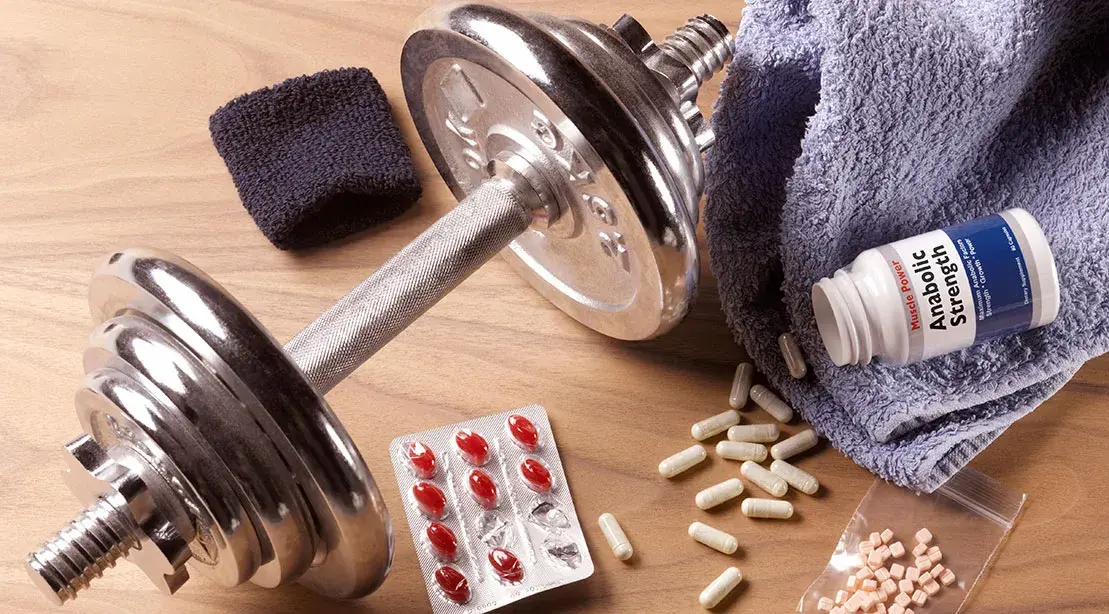The landscape of performance enhancement is continually evolving, with designer steroids representing a significant shift. These substances are specifically tailored to skirt current testing protocols and regulatory frameworks, presenting a challenge to authorities intent on maintaining fair play in sports. Designer steroids are not traditionally recognized pharmaceuticals; instead, they are synthetically altered derivatives of testosterone designed to maximize certain physiological effects while minimizing others, making detection more difficult.
The proliferation of designer steroids poses serious health risks to users, as the long-term effects are not well understood. Regulation of these substances is complicated by their ever-changing nature and the agility of manufacturers in producing new variations. Despite efforts from regulatory bodies, the use of designer steroids remains an issue within competitive sports and even amateur fitness communities. The substances occupy a gray area in terms of legality, and ongoing scientific research seeks to unravel both their potential therapeutic benefits and their risks.
Quick Summary
- Designer steroids are engineered to evade detection and regulation, posing a challenge in sports and law enforcement.
- The health implications of designer steroids are significant and poorly understood, highlighting the need for caution.
- Legal and scientific scrutiny is intensifying, aiming to safeguard public health and uphold fair competition in sports.
Designer Steroids Defined

In the realm of performance enhancement, designer steroids represent an advanced class of synthesized compounds deliberately altered to avoid detection in doping tests, while still promoting muscle growth and athletic performance akin to anabolic-androgenic steroids.
Chemical Characteristics
Designer steroids are lab-engineered to possess specific molecular structures, often with slight variations from known anabolic steroids, enabling them to remain undetected by conventional drug testing methods. For example:
- Tetrahydrogestrinone (THG): Recognized for its absence on anti-doping screenings, THG’s structure significantly diverges from that of familiar steroids, making it more elusive to detection.
- Methylstenbolone: Characterized by its altered carbon structure and resistance to metabolic breakdown, increasing its anabolic capability.
- Dimethazine: Comprises two steroid molecules bonded together, intended to optimize its bioavailability and potency following metabolic cleavage.
Differences from Anabolic Steroids
Designer steroids differentiate from conventional anabolic steroids primarily through their undetectability and chemical alterations:
- Undetectability: Unlike anabolic-androgenic steroids listed in anti-doping agencies’ databases, designer steroids are less recognizable due to their novel structures.
- Chemical Alterations: Modifications such as additional methyl groups or altered carbon chains bestow designer steroids with distinct properties that may affect their anabolic-to-androgenic ratio, potency, and metabolic stability.
References
Risks and Health Implications

Designer steroids represent a significant health concern due to their potent effects and the lack of research regarding their safe use. This section outlines the immediate and lasting health issues associated with these substances, as well as the difficulties in regulating their distribution and use.
Short-Term Health Effects
Designer steroids can rapidly alter the body’s normal functions, leading to a range of adverse health effects. They are known to cause liver injury and disrupt cholesterol balance, resulting in increased blood pressure and strain on the cardiovascular system, which may lead to heart attacks and strokes. Muscle weakness can occur as the body struggles to cope with the unnatural muscle growth.
- Liver Injury: Rapid increase in enzyme levels indicating stress.
- Cardiovascular Strain: Elevated risk of clots and arterial damage.
- Muscle Weakness: Instances of injury due to compromised muscle integrity.
Long-Term Consequences
The persistent use of designer steroids can lead to chronic health issues. Hormone-related cancers, particularly those targeting the male sexual organs, have been linked to long-term steroid usage. Distorted body aesthetics due to disproportionate muscle growth can also lead to psychological distress. Furthermore, chronic alterations in blood chemistry, like those affecting cholesterol and blood pressure, may not be reversible, increasing the risk for long-term cardiovascular diseases.
- Hormone-Related Cancers: Increased risk, especially in male sexual organs.
- Body Aesthetics: Potential for body dysmorphia due to unnatural changes.
- Cardiovascular Disease: Long-term risk compounded by permanent changes in blood chemistry.
Regulatory Challenges
The rapid emergence and structural variability of designer steroids present significant challenges to regulatory bodies. Their evolving nature makes it difficult to detect these substances, let alone evaluate and communicate their associated risks to the public effectively. Policymakers and health officials are continuously struggling to adapt to this dynamic landscape.
- Detection: Difficulty in identifying new designer steroid compounds.
- Evaluation: Limited data on the full spectrum of health implications.
- Communication: Struggle to keep public informed of risks and legality.
References
Use in Sports and Doping Controls

Designer steroids are synthetically produced compounds designed to avoid detection by current drug testing methodologies in competitive sports. Athletes may use these substances seeking an anabolic effect to enhance muscle mass, strength, and overall athletic performance.
Detection of Designer Steroids
The World Anti-Doping Agency (WADA) continuously evolves testing strategies to detect designer steroids in athletes’ biological samples. These tests must adapt swiftly to the emergence of new substances designed to remain undetected. Methods include:
- Gas chromatography-mass spectrometry (GC-MS)
- Liquid chromatography-tandem mass spectrometry (LC-MS/MS)
- High-resolution mass spectrometry (HRMS)
Challenges:
- Variability in steroid structure
- Low concentrations in urine or blood samples
- Short detection windows
Doping Prevention and Education
WADA and other bodies implement educational programs aimed at preventing doping in sports. These initiatives focus on the risks associated with the use of performance-enhancing drugs and the ethical aspects of fair competition.
Key components include:
- Awareness campaigns: highlighting the dangers of designer steroids
- Accessible information: clear guidelines on banned substances
- Support services: for athletes considering or recovering from steroid abuse
Historical Cases of Steroids Abuse
The history of sports bears witness to numerous doping scandals involving steroids:
| Year | Incident |
|---|---|
| 1988 | Ben Johnson’s Olympic disqualification |
| 1998 | The Festina affair at the Tour de France |
| 2003 | BALCO scandal implicating multiple athletes |
These cases highlighted the need for strict deterrents against doping and significantly bolstered anti-doping controls.
References
- WADA’s Official Site – https://www.wada-ama.org/
- LC-MS/MS Methodologies – https://pubs.acs.org
Legal Aspects and Consumer Safety

Designer steroids have raised concerns due to their impact on public health and the legal implications of their distribution. The regulation attempts to control their availability, while consumer awareness efforts aim to educate the public about the potential risks.
Regulation of Supplements
Regulatory agencies have a significant responsibility in ensuring the safety and proper labeling of dietary supplements. In the United States, the Food and Drug Administration (FDA) does not require supplements to undergo the rigorous testing that pharmaceutical drugs do before hitting the market. However, under the Dietary Supplement Health and Education Act (DSHEA), manufacturers are responsible for determining that their products are safe and that any claims made about them are substantiated by adequate evidence.
The World Anti-Doping Agency (WADA) plays a critical role in the sports industry by maintaining a list of prohibited substances. This list often includes designer steroids, which can be found in some supplements marketed to fitness shops and young consumers. WADA’s regulations are aimed at maintaining the integrity of sports and protecting athletes from health risks.
Labeling requirements are designed to inform consumers about the ingredients and potential side effects of supplements. The FDA monitors labeling to prevent misleading claims, but the system is reactive, often addressing issues only after a public health problem arises.
Consumer Awareness
Consumer awareness initiatives are vital in educating people, especially young consumers, about the risks associated with unverified nutritional supplements. Awareness campaigns, often spearheaded by public health organizations and consumer advocacy groups, stress the importance of consulting healthcare professionals before using supplements.
The fitness industry, including retailers such as fitness shops, plays a role in education by ensuring that staff are informed about the products they sell. The information provided must be clear and accurate, helping consumers make informed decisions.
Consumers are advised to verify the authenticity of supplements and be cautious of products that make exaggerated performance claims. A well-informed public is less likely to fall prey to the allure of designer steroids, consequently reducing the associated health risks.
References
- FDA’s Dietary Supplement Labeling Guide: https://www.fda.gov/food/dietary-supplements-guidance-documents-regulatory-information/dietary-supplement-labeling-guide
- World Anti-Doping Agency Prohibited List: https://www.wada-ama.org/en/resources/science-medicine/prohibited-list-documents
Scientific and Medical Research

The scientific community is actively enhancing the detection of designer steroids and developing treatments for steroid dependence through rigorous investigation of their pharmacological properties and clinical implications.
Recent Advances in Steroid Detection
Identification of illegal steroid use is of paramount importance in both sports and law enforcement. The development of sophisticated analytical strategies has been central to recent progress in this area. Toxicology laboratories employ advanced technologies like mass spectrometry (MS) and gas chromatography (MS/GC), which have considerably improved the sensitivity and specificity of steroid detection. High-resolution mass spectrometry (HRMS) has become a pivotal tool for forensic laboratories, detecting even minute quantities of novel steroid compounds that may evade standard tests.
- Analytical techniques applied in recent studies:
- Gas chromatography-mass spectrometry (GC-MS)
- Liquid chromatography-tandem mass spectrometry (LC-MS/MS)
- High-resolution mass spectrometry (HRMS)
Research also focuses on the biosynthesis of proteins that interact with steroids. This aids in understanding how designer steroids function at a molecular level and how they can be identified through their biological activity.
Treatment of Steroid Abuse and Dependence
The clinical approach to treating steroid abuse has advanced in line with our understanding of its pharmacological impact. Multidimensional treatments that address both physical and psychological aspects of dependence are being shaped by current research. Medical professionals are leveraging pharmacotherapy to mitigate withdrawal symptoms and cognitive-behavioral therapy (CBT) to address the psychological grip of steroid compulsion.
- Clinical interventions include:
- Pharmacotherapy: to alleviate withdrawal symptoms using various medications.
- Behavioral Therapies: particularly CBT and motivational interviewing to combat psychological addiction.
By these means, medical researchers contribute crucial knowledge to a growing repository of strategies aimed at combating the negative effects of steroids misuse.
References
- High-resolution mass spectrometry in steroid analysis: www.researchjournal.com/hrms/steroids
Frequently Asked Questions

This section answers common inquiries regarding the new generation of designer steroids, covering differences from traditional steroids, specific examples, regulations, comparisons to SARMs, recent developments, and health implications.
How do new designer steroids differ from traditional anabolic steroids?
Designer steroids are engineered to avoid detection in drug tests and may have altered chemical structures to enhance specific anabolic effects. They are often synthesized to maximize muscle growth while attempting to minimize androgenic side effects.
What are some common examples of designer steroids currently in use?
Notable examples of designer steroids include Tetrahydrogestrinone (THG), Desoxymethyltestosterone (DMT), and Methasterone. These compounds are used by some individuals seeking similar muscle-building effects as traditional steroids without the same level of legal scrutiny or detection.
What legislative measures have been taken to control the use of designer steroids?
Legislative measures include the Anabolic Steroid Control Act of 2004 in the United States, which expanded the list of controlled anabolic steroids and introduced penalties for trafficking. Many countries have similar laws to regulate the distribution and use of such substances.
How do Selective Androgen Receptor Modulators (SARMs) compare to designer steroids?
SARMs are designed to specifically target androgen receptors and offer a more selective mechanism of action compared to designer steroids. This selectivity theoretically allows for fewer side effects while still promoting muscle growth and fat loss.
Can you describe the most recent advancements in designer steroid development?
Recent advancements in designer steroid development involve creating substances that elude standard detection methods. Researchers are focusing on modifications that produce a subtle but effective anabolic response with diminished androgenic effects.
What are the potential health risks associated with the use of designer steroids?
Designer steroids carry health risks similar to those of traditional anabolic steroids, including cardiovascular diseases, liver damage, hormonal imbalances, and psychiatric effects. Due to their unregulated nature, the risks may be unpredictable and possibly more severe.
References
Dr. Grant Fourie, a specialist in male hormones, is based in Cape Town, South Africa. He provides comprehensive treatments for conditions related to low testosterone, such as erectile dysfunction, fatigue, and mood changes. His methods include hormone replacement therapy and other modern treatment options.
Contact me via email or phone to book personal appointment in my clinic: The Village Square, Cape Town - South Africa



